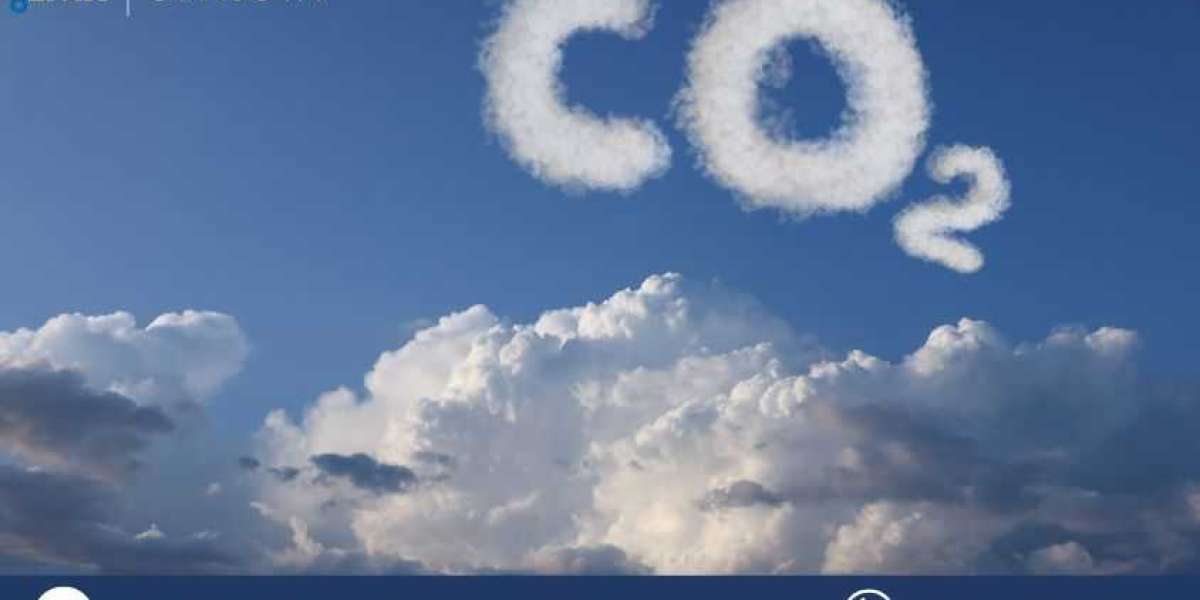The United Kingdom carbon dioxide market size plays a crucial role in multiple industries, including food and beverage, healthcare, manufacturing, and agriculture. Carbon dioxide is widely used in carbonated drinks, refrigeration, welding, medical applications, and enhanced oil recovery (EOR). The growing demand for industrial gases and sustainability-driven CO₂ utilization methods is shaping the future of the market.
In 2024, the UK carbon dioxide market attained a volume of 725.80 KMT. The market is expected to grow at a CAGR of 1.50% from 2025 to 2034, reaching approximately 842.32 KMT by 2034. Factors such as expanding food processing industries, medical advancements, and carbon capture initiatives are driving market growth.
This article explores the key drivers, challenges, trends, segmentation, and future opportunities shaping the UK carbon dioxide industry over the next decade.
Market Drivers: What’s Fueling Growth?
1. Expanding Food and Beverage Industry
The UK has a strong demand for carbonated soft drinks, beer, and packaged food products, all of which require CO₂ for carbonation, preservation, and packaging. The rise of ready-to-drink beverages, functional drinks, and plant-based foods is increasing the use of food-grade carbon dioxide.
2. Growing Demand in the Healthcare Sector
CO₂ plays an essential role in medical applications, including respiratory therapies, minimally invasive surgeries, and cryotherapy. The increasing use of CO₂ lasers in surgical procedures and laparoscopy applications is driving demand for high-purity medical carbon dioxide.
3. Industrial Applications and Manufacturing Expansion
Manufacturing industries in the UK use CO₂ for welding, metal fabrication, and cooling systems. The automotive, aerospace, and electronics sectors rely on CO₂ for precision engineering and controlled atmospheres, supporting market growth.
4. Adoption of Carbon Capture and Utilization (CCU) Technologies
To reduce carbon emissions and improve sustainability, companies are investing in carbon capture and utilization (CCU) technologies. Captured CO₂ is increasingly used in concrete production, synthetic fuels, and chemical manufacturing, presenting growth opportunities.
5. Demand for CO₂ in Agriculture and Greenhouse Operations
Greenhouse farming in the UK is growing due to climate change and the need for year-round food production. CO₂ enrichment in greenhouses helps improve crop yield and plant growth, boosting demand in the horticulture and indoor farming sectors.
6. Expansion of Dry Ice Applications
Dry ice, a solid form of CO₂, is widely used for cold chain logistics, pharmaceuticals, and event fog effects. With the rise in e-commerce and temperature-sensitive logistics, dry ice applications are expected to expand further.
Market Challenges: Barriers to Growth
1. Fluctuations in CO₂ Supply and Production
The UK primarily sources CO₂ as a byproduct from industrial processes, such as ammonia and ethanol production. Supply disruptions due to plant shutdowns and fluctuating production rates impact market stability.
2. Stringent Environmental Regulations
Carbon dioxide is a key greenhouse gas, and regulations on industrial emissions, carbon taxes, and sustainability goals impact its production and use. Companies must comply with strict environmental standards, increasing operational costs.
3. Volatility in Raw Material Costs
The availability and pricing of feedstocks like natural gas and bio-based materials affect CO₂ production costs. Market fluctuations and geopolitical factors can influence supply chain stability.
4. Limited Infrastructure for Carbon Capture and Storage (CCS)
Although carbon capture and storage (CCS) is a growing trend, the UK still lacks large-scale infrastructure and investments in CO₂ storage and reuse. Expanding CCS networks is necessary for future growth.
5. Competition from Alternative Refrigerants and Gases
Industries that use CO₂ as a cooling agent or fire suppression gas face competition from alternative refrigerants, nitrogen, and other industrial gases. Innovations in low-carbon cooling technologies could limit CO₂ market expansion.
Key Market Trends: Shaping the Future of Carbon Dioxide Use
1. Increased Focus on Carbon Neutrality and Sustainability
The UK government and private sectors are investing in net-zero carbon initiatives. Companies are adopting CO₂ recovery, carbon trading, and emission reduction strategies, driving demand for sustainable CO₂ applications.
2. Expansion of CO₂-Based Synthetic Fuels and Chemicals
Researchers are exploring synthetic fuels and chemicals made from captured CO₂. This trend is gaining traction in aviation fuel production, methanol synthesis, and eco-friendly plastics.
3. Technological Innovations in CO₂ Utilization
Advanced CO₂ conversion technologies are emerging, allowing industries to repurpose CO₂ for energy storage, algae cultivation, and biochemical synthesis. This supports circular economy models.
4. Growth in CO₂ Refrigeration Systems
CO₂ is becoming a preferred natural refrigerant due to its low environmental impact and efficiency. Supermarkets, cold storage facilities, and food processing plants are adopting CO₂-based refrigeration systems to comply with F-Gas regulations.
5. Development of CO₂-Based Concrete and Building Materials
The construction industry is using CO₂-infused concrete to improve material strength and reduce carbon emissions. This innovation aligns with sustainable building practices and green infrastructure projects.
6. Increasing Role of CO₂ in Advanced Medical Treatments
Beyond traditional medical uses, CO₂ is gaining importance in non-invasive surgeries, laser therapies, and cryogenic treatments. The medical sector’s expansion and innovation will continue to drive CO₂ demand.
Market Segmentation: Understanding Key Categories
By Source
- Industrial Byproduct CO₂ – Sourced from fertilizer, ethanol, and natural gas processing plants.
- Natural CO₂ Reservoirs – Extracted from geological sources.
- Captured CO₂ – From carbon capture and storage (CCS) technologies.
By Application
- Food Beverage – Carbonation, packaging, and preservation.
- Healthcare Pharmaceuticals – Respiratory treatments, cryotherapy, and laser surgery.
- Manufacturing Welding – Metal fabrication, cutting, and industrial processing.
- Agriculture Horticulture – Greenhouse crop growth enhancement.
- Oil Gas Industry – Enhanced oil recovery (EOR) applications.
- Refrigeration Dry Ice – Cold storage, logistics, and temperature-sensitive shipping.
By Region
- London South East England – High demand in food, healthcare, and industrial sectors.
- Midlands North England – Growth in manufacturing, chemical, and construction industries.
- Scotland Wales – Emerging carbon capture projects and agricultural applications.
Future Outlook: Growth Opportunities in the UK Carbon Dioxide Market
1. Expansion of Carbon Capture and Utilization (CCU) Projects
Companies will invest in CO₂ recovery, synthetic fuel production, and emissions reduction technologies.
2. Growth in Bio-Based and Renewable CO₂ Production
Innovations in bioethanol production and waste-to-CO₂ conversion will create sustainable CO₂ supply chains.
3. Development of CO₂-Based Energy Storage and Batteries
Researchers are exploring CO₂-assisted energy storage solutions, supporting renewable energy integration.
4. Increased Investments in CO₂ Logistics and Distribution Networks
To meet demand, companies will expand transport, storage, and distribution capabilities for liquid and gaseous CO₂.
5. Adoption of AI and Automation in CO₂ Monitoring
Smart AI-driven sensors will improve CO₂ capture, storage, and distribution efficiency.








